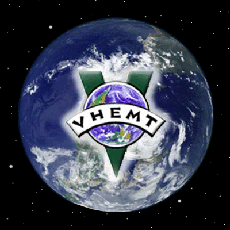bhrobards wrote:There is a deeper point about the nature of models. Every parameter is an estimate in the true sense of the word. If for instance, you were to examine albedo, you may write an equation that uses the earth's average albedo. Then you might get more sophisticated and vary the albedo by season or month or day or decade. You might include aerosols or a hundred other factors. Ultimately there are factors that we don't have the time or money to consider so they are left out and albedo is estimated.
The general idea is to include the most significant factors. And for many parts of the model, they succeed in this. And the models evolve, and one of the key ways they do so is by including a greater number of terms.
And there are catastrophic and other unknowns. If a large volcano erupts all of your estimates are shot.
Not really. We know that volcanoes generally have very little impact on long term climate- more than a few years. And for most purposes, that can be ignored. Of course, something really catastrophic can happen, like a repeat of the Deccan Traps, or a dinosaur killer. But that's very unlikely, and there's really no reason to consider such things.
There is no way you can use models in a system this complex and chaotic to successfully predict anything 100 years in the future.
Weather is chaotic for periods longer than a few weeks, but climate is much less so. The models themselves demonstrate that you can predict (postdict) climate for thousands of years. Chaos isn't going to bite us for several hundred year trends.
The belief that all observed changes in the earth can be explained by the forces that are acting now.
Well, for periods of centuries, that's a generally reasonable assumption with respect to natural forces. The wildcard is man made effects, and that's why all the climate models allow for a wide range of assumptions in that respect- such as the wide possible range in future carbon emissions.
I would love to know of 100 year predictions that involve something like the climate that have been correct.
Well, that's exactly what the current models succeed in doing.
Chris-what does it means to tweak the variables and compare them to archived observations. They are trying to write a program that matches past data in order to try and predict the future if you can't see this is curve fitting you need glasses.
I'd consider classic curve fitting in the case of a very complex system to treat the system as a big polynomial. A model, on the other hand, has a solid physical basis. For instance, we use a model to figure out where Solar System bodies will be in the future. That's a complex, chaotic system, but the underlying mechanics are well understood. What can't be determined from first principles is the many coefficients of the equations, so these are derived from historical measurements. And this model proves very good at predicting where bodies will be in the future- accurate from months to millennia, depending on the body. The model also tells you where things were in the past, to the same accuracy. A polynomial fit based on historical data would do a good job looking backwards, but not looking forwards. Climate models are also good at looking forward because they are based on real, physical systems. And the models will just get better as those physical systems are better understood. For the most part, climate is well behaved and does change gradually; the challenge right now is that under human forces, it is changing so rapidly that unusual driving forces are getting involved, and those are much less well understood, since they haven't been significant components of most past change.
